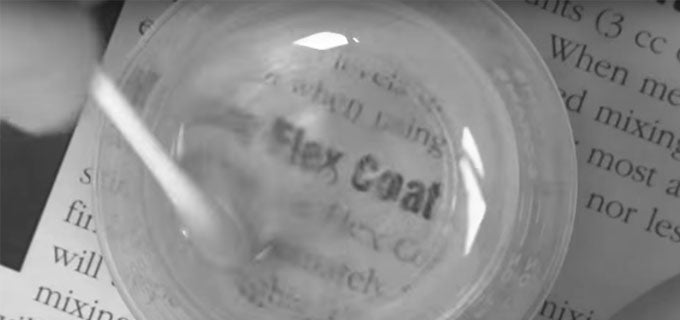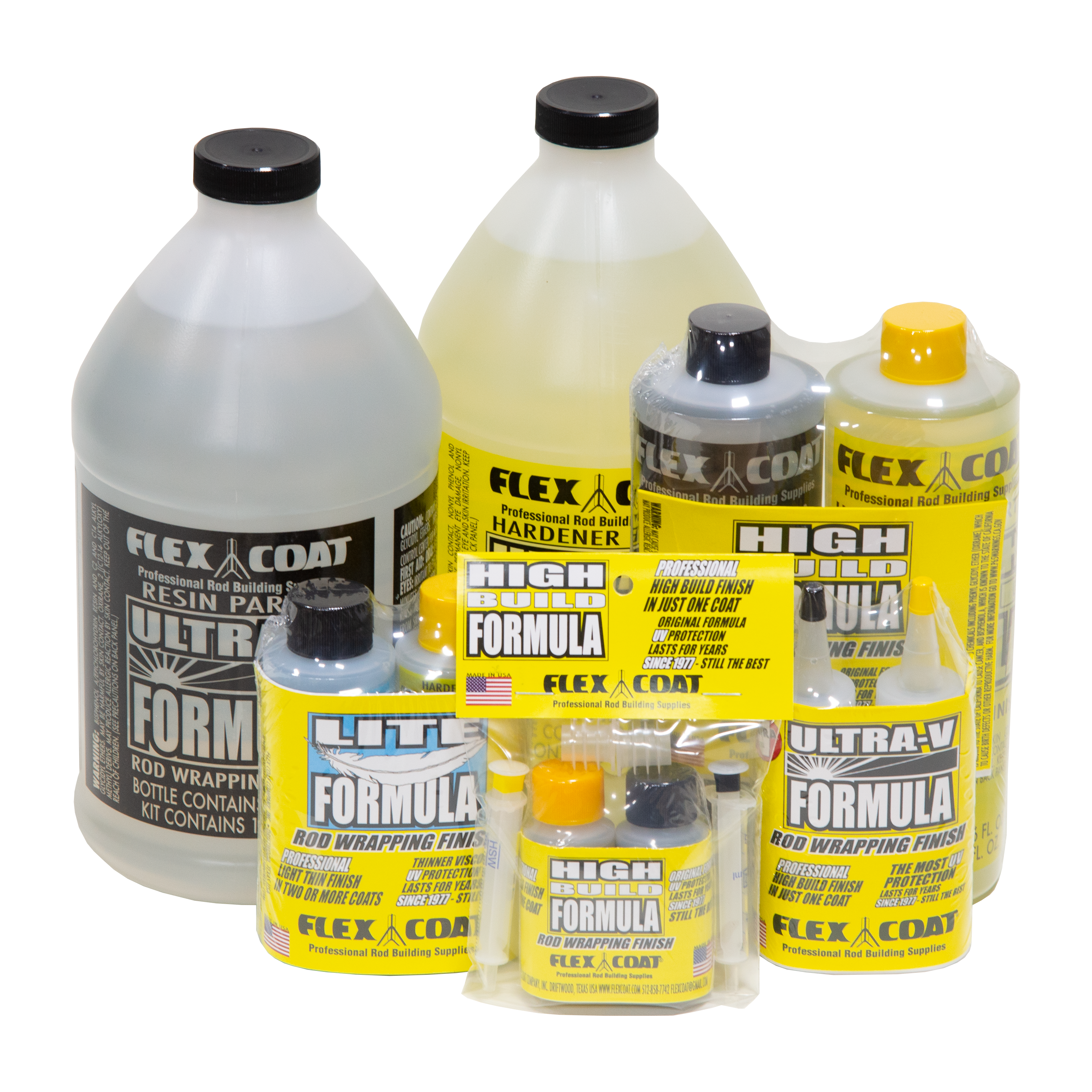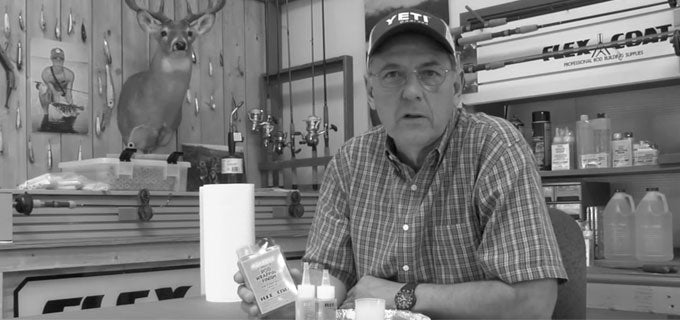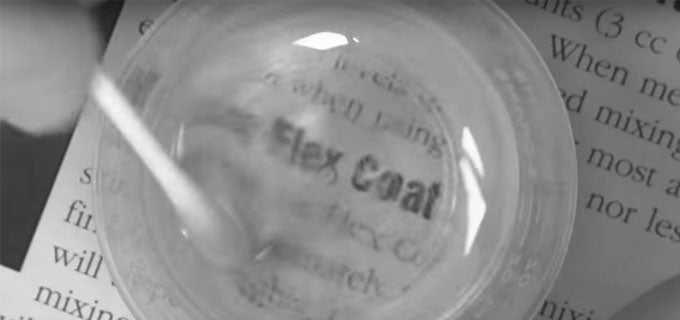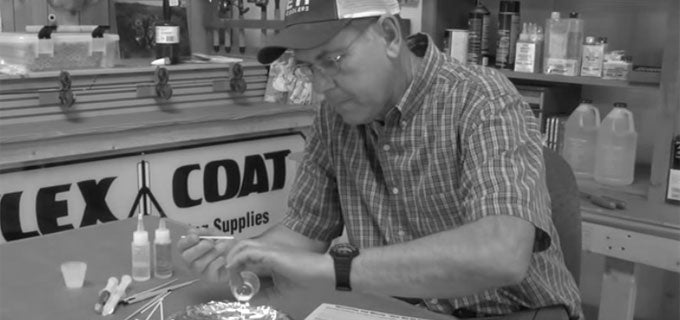Measuring and Mixing… “The Flex Coat Way”
For years we have communicated with custom rod builders and manufacturers about our techniques to measure and mix Flex Coat Rod Wrapping Finish successfully. We decided to include the following directions in our catalog addressing only measuring and mixing of Flex Coat. The directions list the steps of how we do it on our personal rods. These techniques work with both Flex Coat Lite and High Build.
Creating the Perfect Finish
We get our best finish with two coats. Some heavier offshore and surf rods may require a third coat. We call the first coat the primer coat, which in most cases is thinned with acetone. This technique is most advantageous when finishing a large number of rods. Thinning with acetone allows for increased speed of application and extended pot life. When thinning with acetone, apply just enough finish to saturate the thread. Understand that when applying a primer coat thinned with acetone we allow 24 hours for the finish to cure before applying the next coat. When we are rushed to finish a rod and cannot wait 24 hours for the primer coat to dry we do not thin the first coat. Not thinning the primer coat allows recoating in 6 to 8 hours.

Note: We do not use color preserver on any of the wraps that hold the guides down because it prevents the finish from soaking into the thread, which is essential for a strong bond.
Checking the Temperature
Prior to measuring equal portions we like our finish to be around 80 degrees Fahrenheit. This temperature makes it easier to measure equal portions and mix the finish thoroughly. In cold weather we heat the A and B bottles with a lamp, space heater, hair dryer, warm tap water or other heat source until the bottles are no longer cool to touch but not warm (neutral to touch). If the resins are too warm (over 100 degrees F) the catalytic reaction occurs too quickly.

Measuring Equal Proportions (Two Techniques)
To measure small amounts (3 cc of each resin or a 6 cc mix) we use Flex Coat syringes because they do not contain silicone. When measuring larger amounts (7 1/2 cc of each resin) we use graduated mixing cups. In a graduated mixing cup we always measure Part B first (the hardener) because it is thinner and levels quickly for most accurate measurements. We never measure less than 2 cc of each part when using syringes nor less than 5 cc of each part when using graduated measuring cups.

Mixing Flex Coat the Right Way
We always mix Flex Coat in a mixing cup with a small diameter round non-porous plastic or metal stirrer (approximately 3/32″ to 1/8” in diameter). Never use wood popsicle or craft sticks. Mix the finish thoroughly, the finish will first appear marbled, then cloudy, then marbled again, and finally it will appear clear when thoroughly mixed. It is important to scrape the sides and bottom of the mixing cup to insure all of the epoxy is completely mixed. Mix the Flex Coat until it is crystal clear. Some bubbles will form in mixing, and while a small amount is no cause for concern, avoid a frothy mixture. After the mixture is in its clear state it can now be thinned with acetone. The amount of acetone added should not exceed 1/15 of the total mixture volume. We use our graduated pipets for these minute measurements of acetone (see tips on measuring acetone for primer coat).

Using Your Flex Coat Mix
Again mix the thinned Flex Coat until it is crystal clear. Once mixed, we pour the finish onto a disposable plate covered with aluminum foil to release bubbles and extend the pot life. This primer coat with acetone should be applied in a thin coat, where once saturated, you can still see the thread texture. It is important that the primer coat with acetone is not too thick, otherwise it will not set properly. Make sure the finish soaks through the threads and fills the air pocket caused by the guide foot, the rod blank, and the threads. We allow 24 hours for the primer coat to dry (6 to 8 hours for un-thinned coats) before applying additional coats. We never thin any additional coats after the primer coat.
Tips For Using Acetone
- For a 6cc mix of Flex Coat add 2/5cc of acetone, which is just under 1/2cc
- For a 15cc mix of Flex Coat add no more than 1cc of acetone
- For a 1oz. mix of Flex Coat add no more than 2cc of acetone
